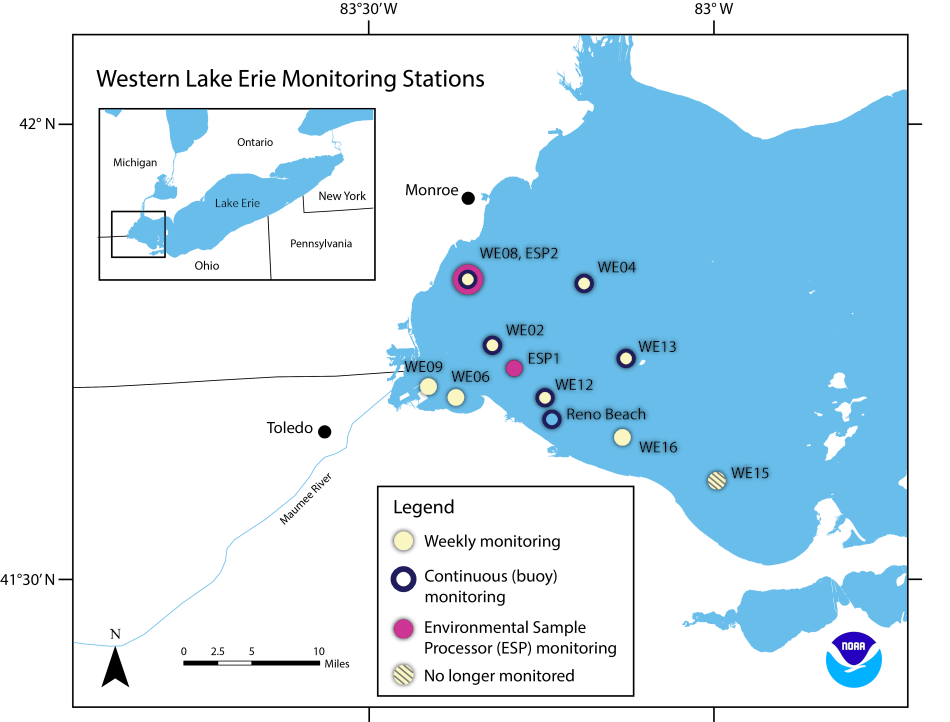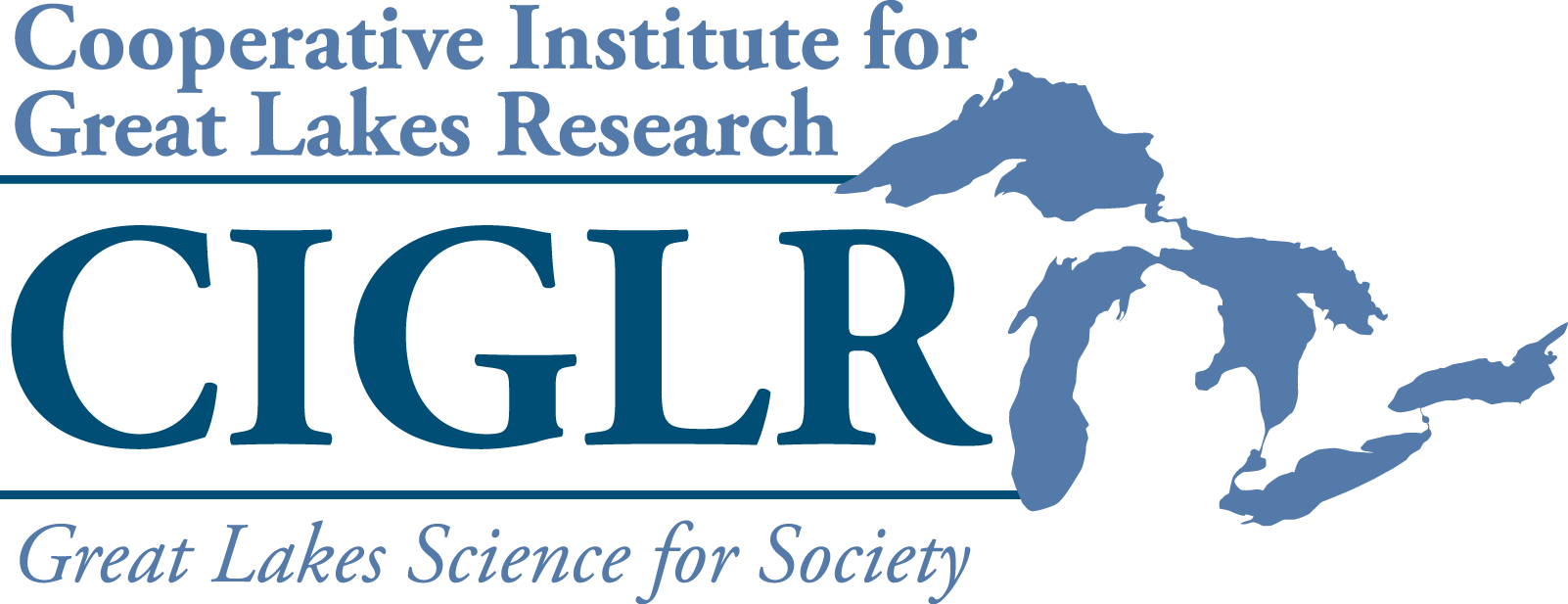x
| NOAA/GLERL is not an operational center. We make every effort to ensure accuracy and minimize downtime, however, we cannot guarantee that data and products will always be available and/or accurate. Our forecasts and products should be considered experimental. Please review our disclaimers. |
Experimental Lake Erie Real-time Data

Jump to time-series plots of real-time data from western Lake Erie
Most recent real-time data from western Lake Erie (Click here to collapse)
| Variable | WE2 | WE4 | WE8 | WE13 |
|---|---|---|---|---|
| Time | "2024-10-18 16:01:00" | "2024-10-21 21:31:00" | "2023-10-11 19:16:00" | "2019-10-02 16:46:00" |
| Air Temperature (deg C) | 13.99 | 0 | 15.1 | 23.43 |
| Water Temperature (deg C) | 14.12 | NA | 12.97 | NA |
| Barometric Pressure (mbar) | 1012.521 | 0 | 988.3999 | 984.3978 |
| Wind Speed (m/s) | 1.292 | 0 | 0.55 | 0.531 |
| Wind Direction (deg clockwise from North) |
192.1 | 0 | 135.7 | 10.4 |
| Turbidity (NTU) | 7.344 | NA | 54.43 | NA |
| Specific Conductivity (μS/cm) | 259.2 | NA | 0.492 | NA |
| Chlorophyll A (RFU) | 0.596 | NA | 0.142 | NA |
| Blue-Green Algae (RFU) | 0.018 | NA | 1.283 | NA |
| Flourescent Dissolved Organic Matter (RFU) |
2.684 | NA | -1.391 | NA |
| Nitrogen (mg/L) | 0.3494 | NA | 0 | |
| Dissolved Oxygen (mg/L) | 9.97 | NA | 10.67 | NA |
| pH | 8.43 | NA | 7.042 | NA |
| Phosphorus Timestamp | 2024-10-18 15:05:13 | NA | 2023-10-11 18:05:12 | NA |
| Phosphorus (μgP/L) | 8.1 | NA | -2.7 | NA |
OR - Select variables to compare between all sites:
|
|
|
|
2016-2020 times are GMT. 2015 and earlier times are local (ET) with the exception of WE4 which is in GMT. |
||
Select a date below along with how many days before and after that date
you would like to view. 30 days maximum (± 15).
Zoom: click-drag, Pan: shift-click-drag, Restore: double-click
Download data
Download archived weekly and continuous western Lake Erie sampling data from the NOAA National Centers for Environmental Information (NCEI)
Additionally, you may download provisional data from the latest season via the following links:






